#Kambei Shimada
Explore tagged Tumblr posts
Text

#Kambei Shimada#Shimada Kambei#Takashi Shimura#seven samurai#7 samurai#akira kurosawa#Japanese cinema#Seven Samurai 1954#1950s movies#classic movies#black and white movies#Toho#七人の侍#hug kiss marry kill
3 notes
·
View notes
Text

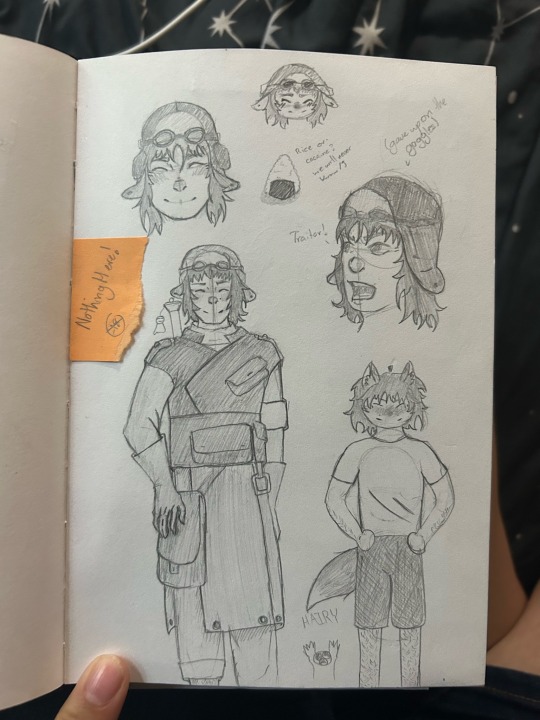

First post ‼️ Samurai 7 Doodles
7 notes
·
View notes
Text
GranBlue Fantasy Versus: Rising: Dual Guest Character Poll (Manga/Light Novel/Anime)



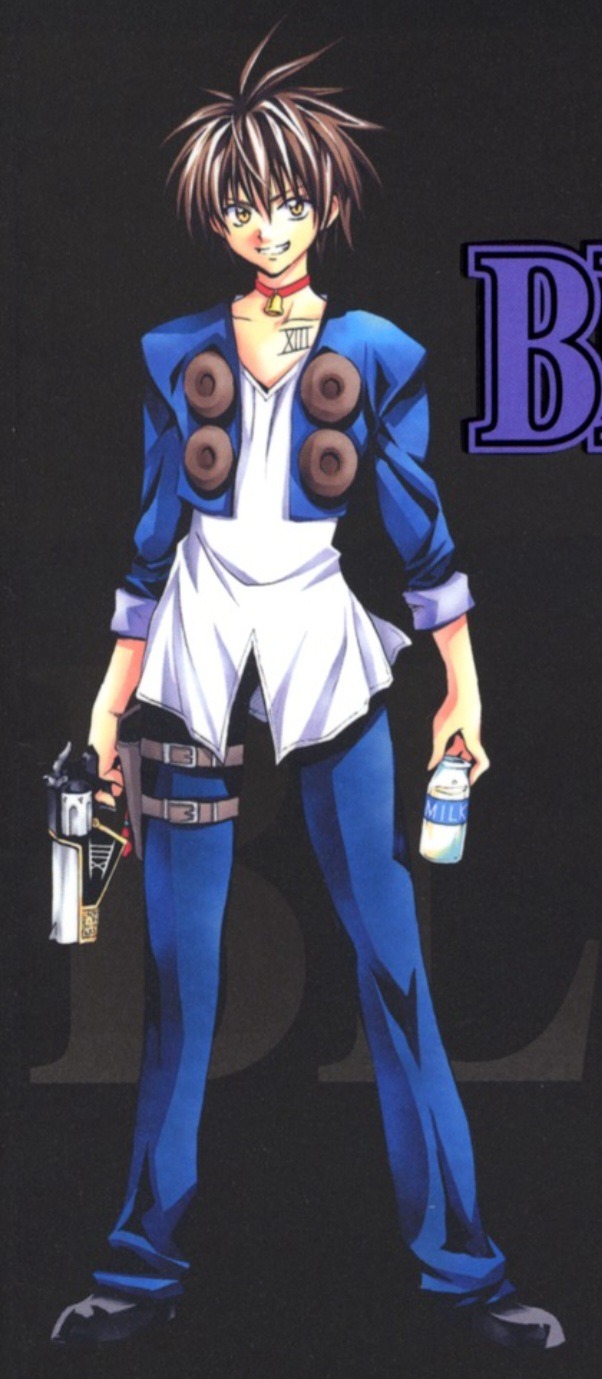


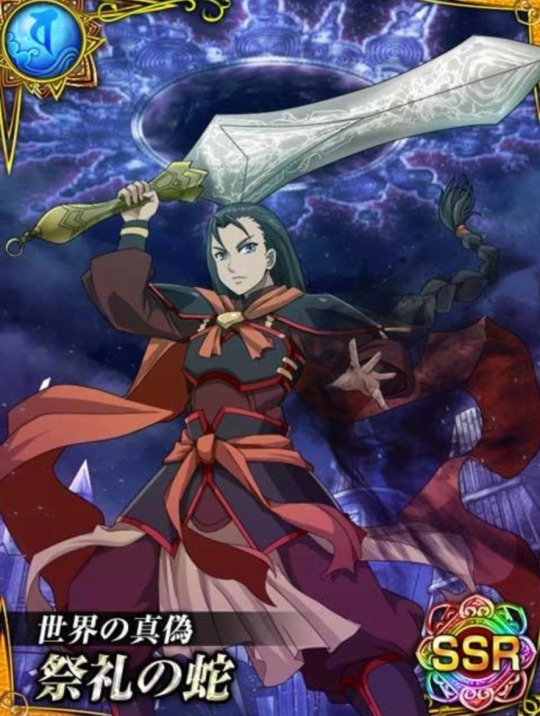




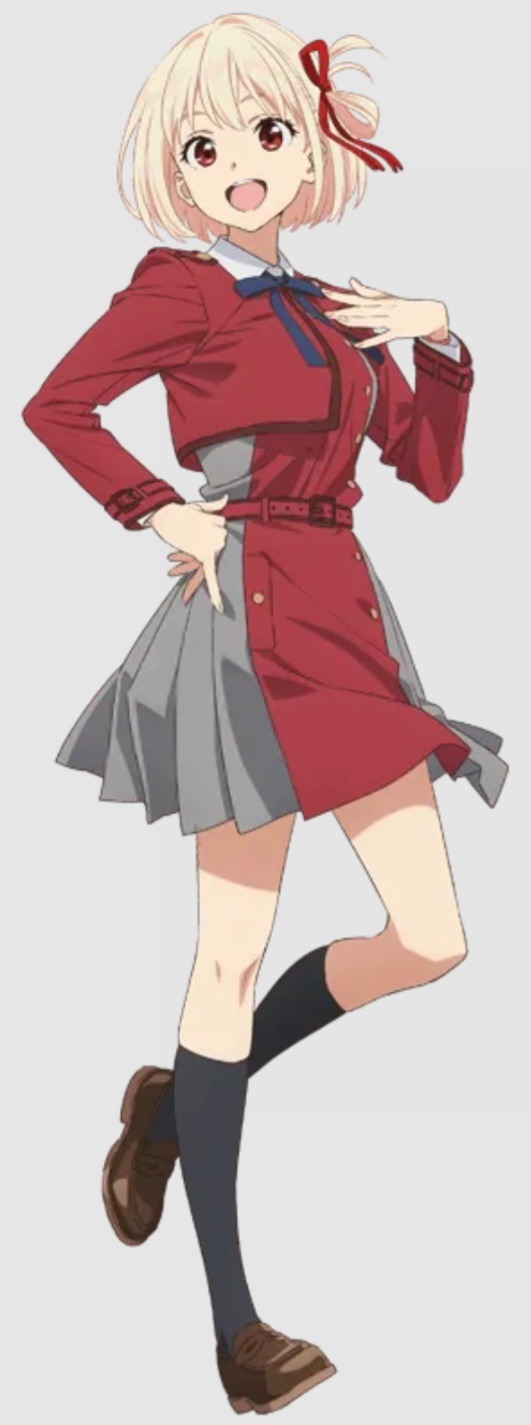

#GranBlue Fantasy Versus: Rising#Akame ga Kill!#Tatsumi#Mine (Akame ga Kill!)#Black Cat (Manga Series)#Train Heartnet#Eve (Black Cat)#Shakugan no Shana#Shana (Shakugan no Shana)#Yuji Sakai#Absolute Duo#Tor Kokonoe#Julie Sigtuna#Samurai 7 (Anime)#Kambei Shimada#Kikuchiyo#Lycoris Recoil#Chisato Nishikigi#Takina Inoue#Question Poll
3 notes
·
View notes
Text
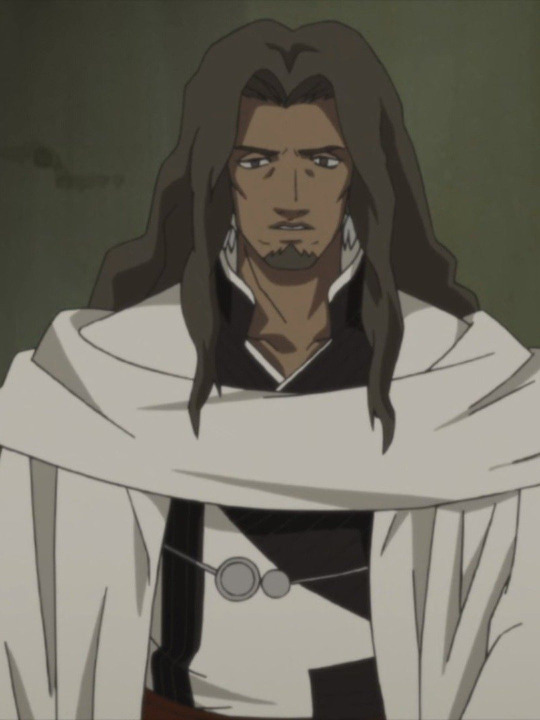
Today’s disabled character of the day is Kambei Shimada from Seven Samurai, who has an unspecified trauma disorder
Requested by Anon
[Image Description: Drawing of a man with long brown hair and brown eyes. He has a brown short beard. He is wearing white robes, black do, long silver spike earrings, and red waist sash.]
#unspecified character#Seven Samurai#Seven Samurai Kambei#Kambei Shimada#disabled character of the day
5 notes
·
View notes
Photo
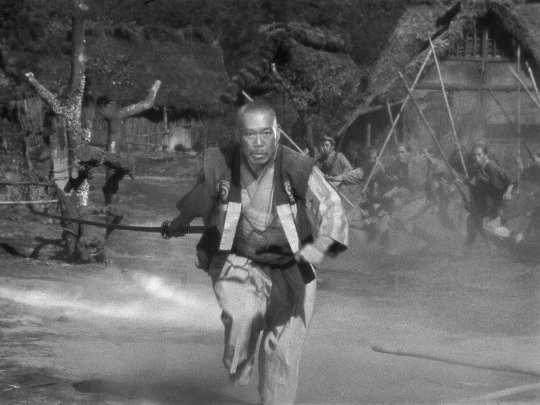
Takashi Shimura in Seven Samurai (Akira Kurosawa,1954)
Cast: Toshiro Mifune, Takashi Shimura, Yoshio Inaba, Daisuke Kato, Seigi Miyaguchi, Minoru Chiaki, Isao Kimura, Yoshio Tsuchiya, Bokuzen Hidari, Yukiko Shimazaki, Kamatari Fujiwara, Keiko Tsushima, Kokuten Kodo, Yoshio Kosugi. Shinpei Takagi, Eijiro Tono, Tatsuya Nakadai. Screenplay: Akira Kurosawa, Shinobu Hashimoto, Hideo Oguni. Cinematography: Asakazu Nakai. Production design: Takashi Matsuyama. Film editing: Akira Kurosawa. Music: Fumio Hayasaka.
It's a truism that silent movies and talkies constitute two distinct artistic media, and to judge the one by the standards of the other is an error. But it's almost impossible to watch films made by older directors, especially those who came of age when silent films were being made, without noticing the efforts they make to tell their stories without speech. It's true of John Ford, Alfred Hitchcock, and Howard Hawks, even though they, especially Hawks, became masters of dialogue in their films. And it's true of Kurosawa, who although he didn't begin his career in films until 1936 and directed his first one in 1943, was born in 1910 and grew up with silent movies. I think it helped him learn the universals of storytelling that are independent of language, so that he became the most popular of all Japanese filmmakers. Others rank the work of Ozu or Mizoguchi more highly, but Kurosawa's films manage to transcend the limitations of subtitles more easily. Of none of his films is this more true than Seven Samurai, which is also generally regarded, even by those with reservations about Kurosawa's work, as his masterpiece. That's not a word I use lightly, but having sat enthralled through the uncut version, three hours and 27 minutes long, last night, I'm willing to endorse it. It's an exhilarating film, with none of the longueurs that epics -- I'm thinking of Gone With the Wind (Victor Fleming, 1939) and Lawrence of Arabia (David Lean, 1962) -- so easily fall into. I don't know of any action film with as many vividly drawn characters, and that's largely because Kurosawa takes the time to delineate each one. It's also a film about its milieu, 16th-century Japan, although as its American imitation, The Magnificent Seven (John Sturges, 1960), shows, there's a universality about the antagonism between fighters and farmers. Kurosawa captures this particularly well in the character of Kikuchiyo (Toshiro Mifune), the would-be samurai who reveals in mid-film that he was raised as a farmer and carried both a kind of self-hate for his class along with a hatred for the arrogant treatment of farmers by samurai. Mifune's show-off performance is terrific, but the film really belongs to Takashi Shimura, who radiates stillness and wisdom as Kambei Shimada, the leader of the seven. There are clichés to be found, such as the fated romance of the young samurai trainee Katsushiro (Isao Kimura) and the farmer's daughter Shino (Keiko Tsushima), but like the best clichés, they ring true. Seven Samurai earned two Oscar nominations, for Takashi Matsuyama's art direction and Kohei Ezaki's costumes, but won neither. Overlooking Kurosawa's direction, Shimura's performance, and Asakazu Nakai's cinematography is unforgivable, if exactly what one expects from the Academy.
4 notes
·
View notes
Text
Week 2: Seven Samurai -Yanissa Agbigay
The movie I chose for this week is called Seven Samurai, directed by Akira Kurosawa. This 1954 film has a 4.8 overall rating and has a handful of viewers who enjoyed this film. Some even commented saying that they feel this movie is a legendary classic, that is influential and unforgettable, while others out there don’t agree and think the movie is quite lengthy while having poor quality. For myself, I would have to agree that this movie was very well made and has a very authentic feel to it. I too enjoyed watching this film and seeing how determined the six villagers were in protecting their own people and village. I decided to watch this film because it reminded me of my childhood, spending time watching older classic movies with my dad. The movie captures a struggling village of farmers who are being forced to give up all their food to bandits giving these villagers the reason to end their lives. Now, the hope for this village is that they will find a samurai who will train 6 men amongst the villagers, to protect their village from the bandits. Luckily for them, they were able to find a veteran samurai who would then help fight the bandits off along with the other men. This man is to be called Kambei Shimada. Kambei was first seen shaving his whole head in front of the villagers, which is an important scene because he was portraying a monk with intent to save a little boy from a thief who snuck in. We can then see that his plan worked and was able to save this young innocent boy, with no injuries to anyone except for the thief himself.

youtube
When Kurosawa directed this movie, their costing budget was around ¥210 million, equaling to $580,000 in USD. Other numbers involving this film were within its releases. Starting off with the domestic release which was $318,649. With the international release they were able to make $27,609 and lastly their worldwide release made about $346,258. Again, I would like to say that this film is quite a success and has lots of viewers who keep coming back to watch.
I would also like to share some historical events that has happened within the movie’s first release in 1954. They include the ruling of the Supreme Court rules on Brown v. Board of Education, stating that segregation in public schools is unconstitutional. In this milestone decision, the Supreme Court ruled that separating children in public schools on the basis of race was unconstitutional. It signaled the end of legalized racial segregation in the schools of the United States, overruling the "separate but equal" principle set forth in the 1896 Plessy v. Ferguson case. Along with the first Indo-China war ending, which ended with the French defeat at the Battle of Dien Bien Phu and French withdrawal from Vietnam after the Geneva Accords. There are many other historical events that happened within the year Seven Samurai was released, but these are the two I decided to choose.
The style of the film is known as Hollywood action. Not only did Kurosawa create a legendary film but he didn’t have a normal plot between the characters. For example, Good Vs. Evil. When watching, We can learn in this movie that some of towns villagers also preyed on class samurai’s but ended up on the other side of things and now have to seek help from a samurai.
This film is such an incredible work of art and is still such a classic, with many viewers who appear to also agree. Overall, this film reflected time and effort on Kurosawa’s part and has shown us a reality of poor villagers and their experiences. As well as, how skilled and trained samurai’s are and must be.
youtube
2 notes
·
View notes
Text
(( The Excessively Detailed Headcanon Tumblr Meme -- @duelcafe said: [ 2. Do they have any daily rituals? 7. Favorite way to waste time and feelings surrounding wasting time? 31. Most prized possession? For Kambei! ]

⛩️ Shimada Kambei // Samurai 7 ⛩️
[ do they have any daily rituals? ]
-- Kambei, like most Samurai in his world wake up with the rising sun. He removes his earrings before sleeping, so he slides them in his ears at first light, using the reflection on his katana to see where he's moving his hands; though he's so practiced it's second nature to breathing and swinging said weapon. He also kneels in seiza position to greet the sun, pray and ask for a good day.
[ favorite way to waste time and feelings surrounding wasting time? ]
-- Contrary to what people [in the series] tend to think, Kambei doesn't like to waste time, if he must though, he spends it wither sleeping, or meditating to where it seems like he's sleeping.
[most prized possession? ]
-- His earrings, and different parts of his clothing. In [episode # idrr] Kambei is shown wearing garments unlike his normal clothes because he's being imprisoned. I feel like his clothing is vey important, like his sword as they're his possessions as he travels around with nothing else, save a little bit of money from doing work when he deems it necessary.
#⛩️ meme reply ⛩️#⛩️ asks ⛩️#⛩️ headcannon ⛩️#duelcafe#⛩️ kambei // the master ⛩️#⛩️ series // samurai 7 ⛩️
1 note
·
View note
Text
Drunken Angel has been called Akira Kurosawa's Stagecoach, because just as John Ford established a fruitful director-actor team with John Wayne in his 1939 Western, in this movie Kurosawa launched a brilliant collaboration with Toshiro Mifune that lasted for 16 films. But to my mind, just as important, Drunken Angel teamed Mifune with the great character actor Takashi Shimura. Kurosawa saw how Shimura's low-key steadfastness serves as a foil for Mifune's volatility and reteamed them in 1949 for two films, The Quiet Duel and Stray Dog, but their most memorable work together would come in Seven Samurai (1954), in which Shimura's wise and wily Kambei Shimada plays off beautifully against Mifune's madly unpredictable Kikuchiyo. In Drunken Angel, Shimura has the title role: an alcoholic doctor laboring in the slums of a postwar Japanese city. His clinic fronts a festering lake of sewage and his clientele comes largely from the neighboring nightclubs and brothels. Mifune plays Matsunaga, a swaggering young gangster with tuberculosis, who comes to Dr. Sanada hoping for a cure that won't put a crimp in his lifestyle. The screenplay by Kurosawa and Keinosuke Uekusa makes both characters into complex figures: Sanada's bitterness about his poverty and lack of status feeds his alcoholism, but he persists in trying to help his patients, even when, like Matsunaga, they resist his efforts, sometimes violently. Still, there's a bond between the two men in a recognition that they are both caught in traps they didn't make. What makes Drunken Angel more than just a clever reworking of film noir tropes -- another instance of Kurosawa's fascination with American movies -- is that it's a veiled commentary on the wounded Japan, in which the militaristic violence has been turned inward. Yesterday's soldier has become today's yakuza, still carrying on about honor and saving face. Kurosawa's film delivers an incisive criticism of some of the root problems facing his country. Made during the American occupation, when censorship was at its strictest, especially in depicting violence, Kurosawa nevertheless stages some vivid and intense fight scenes, using Mifune's physicality to great effect. That much of it occurs against a background of Western-style pop music only heightens its boldness.


三船敏郎 // MIFUNE TOSHIRO 醉いどれ天使 // Drunken Angel (1948)
393 notes
·
View notes
Text
A film that deserves to be rediscovered | The Seven Samurai 4k
“This is the nature of war. By protecting others, you save yourself. If you only think of yourself, you’ll only destroy yourself” Kambei Shimada (Takashi Shimura) Seven Samurai takes place in 16th-century feudal Japan and follows a village under threat from bandits who hire a group of samurai to defend them. The samurai teach the townspeople how to defend themselves. All leading into an epic…
0 notes
Text
Rating Main Characters from the Top Ten of Variety’s 100 Best Movies List Based on Whether or Not I’d have a Drink with Them
I have massive beef with this list but that’s beside the point
1) Norman Bates (Psycho)

11/10 and not just bc @old-wild-child would be disappointed in me if I rated him any less. I don’t even care if Mother would try to kill me. He’s also probably got zero tolerance for alcohol and I think that would be funny to watch.
2) Dorothy (The Wizard of Oz)
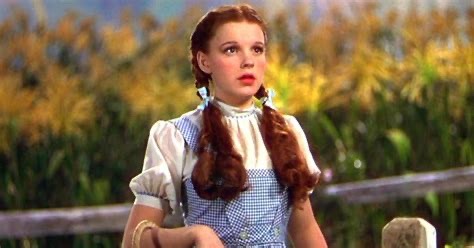
0/10 that is a CHILD. I would however get fucked up with the scarecrow.
3) Michael Corleone (The Godfather)

5/10 I’m scared of him but maybe it would be fun idk. I haven’t seen this movie in ages.
4) Charles Foster Kane (Citizen Kane)

7/10 IF it’s like 25 year old Kane. Idc about old man Kane but I bet he’d be entertaining if it was that era.
5) Jules and uhh. Uhh. That other guy. Vega. VINCENT!! (Pulp Fiction)

8/10 for the pure gits and shiggles of it. I don’t think they’d kill me because they don’t have a reason to.
6) Kambei Shimada (Seven Samurai)

5/10 because I’ve never seen this but uhhh he’s got a sword that’s pretty cool.
7) Dave. Guy. Dave Bowman? (2001: a Space Odyssey)

3/10. Is this picture even him? I don’t know, I haven’t seen this one, but considering it’s space and they’re probably sad and stuff I don’t think he’d be super fun to drink with. That said I would totally drink my sorrows away with Roy McBride. Yes I’m biased.
8) George Bailey (It’s a Wonderful Life)

I know I JUST said I wouldn’t hang out with Dave because he’s sad and weird but me and George are the same kind of sad and weird so he’s getting a 7/10 👍👍👍
9) Margo (All About Eve)

6/10 because I ALSO haven’t seen this one (fake film bro 😔) but she looks like fun.
10) Tom Hanks. I mean. Uhh. JOHN H MILLER (Saving Private Ryan)

5/10 because I’ve never seen this and he looks scary :((
#psycho#the wizard of oz#the godfather#citizen kane#pulp fiction#seven samurai#2001: a space odyssey#it’s a wonderful life#all about eve#saving private ryan#talking from the hellhole
1 note
·
View note
Text

Zatôichi umi o wataru
A peregrinação de Zatoichi
JP, 1966
Kazuo Ikehiro
7/10
Zatoichi Yojimbo
Há uma ligação indelével entre esta saga do massagista samurai Zatoichi, cego mas invencível e vingador das injustiças, e os western do tipo spaghetti, ao seu melhor nível, como é o caso da obra de Sergio Leone.
Kurosawa deu o mote, com obras primas como os Sete Samurais (1954) ou Yojimbo (1961), ambos adaptados a westerns, o segundo por Leone em Por um Punhado de Dólares (1964) e o primeiro por John Sturges em Os Sete Magníficos (1960), este com várias sequelas.
Também Zatoichi, estreado no cinema em 1962, baseado num personagem literário criado pelo romancista Kan Shimozawa em 1928, é um herdeiro direto de Yojimbo, de Kambei Shimada e dos seus discípulos norte-americanos, interpretados por Yul Brynner e Clint Eastwood, entre outros. E originou 26 filmes e uma série de televisão de 100 episódios, com um remake norte americano do décimo sétimo filme da série, Zatoichi Challenged, sob o nome Blind Fury (1989), dirigido por Philip Noyce.
Estamos assim, perante uma instituição do cinema e da televisão japoneses, que eu não posso deixar de ver como um prolongamento desses clássicos, dos heróis-vilões solitários de Kurosawa e de Sergio Leone.
Este episódio, Zatoichi's Pilgrimage, o décimo terceiro da série, é particularmente evocativo de Yojimbo e, por isso, de Toshiro Mifune e de Clint Eastwood, ao seu melhor nível. E Shintarô Katsu, o homem que deu corpo a Zatoichi, durante 26 filmes e 100 episódios televisivos, entre 1962 e 1979 (com um derradeiro filme em 1989 que também dirigiu), não lhes fica seguramente atrás, no carisma e no talento com que enriquece o personagem.
A título de curiosidade, parece que a Miramax comprou os direitos deste filme, alegadamente para fazer um remake, dirigido por Quentin Tarantino.
Zatoichi Yojimbo
There is an indelible connection between this saga of the samurai masseur Zatoichi, blind but invincible and avenger of injustice, and spaghetti westerns, at their best, such as the work of Sergio Leone.
Kurosawa set the tone, with masterpieces such as Seven Samurai (1954) or Yojimbo (1961), both adapted into westerns, the second by Leone in A Fistful of Dollars (1964) and the first by John Sturges in The Magnificent Seven (1960), this one with several sequels.
Also Zatoichi, debuted in cinema in 1962, based on a literary character created by novelist Kan Shimozawa in 1928, is a direct heir of Yojimbo, Kambei Shimada and his North American disciples, played by Yul Brynner and Clint Eastwood, among others. And it originated 26 films and a 100-episode television series, with a North American remake of the seventeenth film in the series, Zatoichi Challenged, under the name Blind Fury (1989), directed by Philip Noyce.
We are thus faced with an institution of Japanese cinema and television, which I cannot help but see as an extension of these classics, of Kurosawa and Sergio Leone's solitary hero-villains.
This episode, Zatoichi's Pilgrimage, the thirteenth in the series, is particularly evocative of Yojimbo and, therefore, of Toshiro Mifune and Clint Eastwood, at their best. And Shintarô Katsu, the man who embodied Zatoichi, during 26 films and 100 television episodes, between 1962 and 1979 (with a final film in 1989 which he also directed), is certainly not behind them, in terms of the charisma and talent with which he enriches the character.
Out of curiosity, it appears that Miramax purchased the rights to this film, allegedly to make a remake, directed by Quentin Tarantino.
1 note
·
View note
Text
It's a truism -- one that I've often echoed -- that silent movies and talkies constitute two distinct artistic media, and to judge the one by the standards of the other is an error. But it's almost impossible to watch films made by older directors, especially those who came of age when silent films were being made, without noticing the efforts they make to tell their stories without speech. It's true of John Ford, Alfred Hitchcock, and Howard Hawks, even though they, especially Hawks, became masters of dialogue in their films. And it's true of Akira Kurosawa, who although he didn't begin his career in films until 1936 and directed his first one in 1943, was born in 1910 and grew up with silent movies. I think it helped him learn the universals of storytelling that are independent of language, so that he became the most popular of all Japanese filmmakers. Others rank the work of Yasujiro Ozu or Kenji Mizoguchi more highly, but Kurosawa's films manage to transcend the limitations of subtitles more easily. Of none of his films is this more true than Seven Samurai, which is also generally regarded, even by those with reservations about Kurosawa's work, as his masterpiece. That's not a word I use lightly, but having sat enthralled through the uncut version, three hours and 27 minutes long, I'm willing to endorse it. It's an exhilarating film, with none of the longueurs that epics -- I'm thinking of Gone With the Wind (Victor Fleming, 1939) and Lawrence of Arabia (David Lean, 1962) -- so easily fall into. I don't know of any action film with as many vividly drawn characters, and that's largely because Kurosawa takes the time to delineate each one. It's also a film about its milieu, 16th-century Japan, although as its American imitation, The Magnificent Seven (John Sturges, 1960), shows, there's a universality about the antagonism between fighters and farmers. Kurosawa captures this particularly well in the character of Kikuchiyo (Toshiro Mifune), the would-be samurai who reveals in mid-film that he was raised as a farmer and carried both a kind of self-hate for his class along with a hatred for the arrogant treatment of farmers by samurai. Mifune's show-off performance is terrific, but the film really belongs to Takashi Shimura, who radiates stillness and wisdom as Kambei Shimada, the leader of the seven. There are clichés to be found, such as the fated romance of the young samurai trainee Katsushiro (Isao Kimura) and the farmer's daughter Shino (Keiko Tsushima), but like the best clichés, they ring true. Seven Samurai earned two Oscar nominations, for So Matsuyama's art direction and Kohei Ezaki's costumes, but won neither. Overlooking Kurosawa's direction, Shimura's performance, and Asakazu Nakai's cinematography is unforgivable, if exactly what one expects from the Academy.







TOSHIRO MIFUNE in SEVEN SAMURAI Dir. Akira Kurosawa (1954)
654 notes
·
View notes
Text
Tenipuri Complete Character Profile - Kippei Tachibana

[PROFILE]

Birthday: August 15th (Leo)
Blood Type: O
Relatives: Great-grandmother, grandmother, father, mother, younger sister (An Tachibana), dog (Gokutora)
Father’s Occupation: Company employee (manufacturer)
Elementary School: Kumamoto First Elementary School
Middle School: Shishigaku Junior High School ➜ Fudomine Junior High School
Grade & Class: Third Year | Class 3-6 | Seat 11
Club: Tennis Club (captain)
Committee: Athletic Committee
Strong Subjects: Engineering, English
Weak Subjects: Biology
Most Visited Spot at School: The new tennis courts
Favorite Motto: “Hard work never fails.”
Daily Routines: Cooking dinner
Hobbies: Cooking (his Japanese food is excellent) ➜ Cooking (Japanese and Chinese food), bathing Gokutora [TP]
Favorite Color: Indigo, black [TP]

Favorite Music: Taiko drum music
Favorite Movie: Seven Samurai
Favorite Book: Historical novels
Favorite Food: Yum-cha, sesame balls [TP]
Favorite Anniversary: Whenever the local summer festival is held
Preferred Type: A healthy person ➜ A person who cannot be left alone [TP]
Ideal Date Spot: Asakusa
His Gift for a Special Person: His (nutritious) cooking

Where He Wants to Travel: Taking his club members to Kyushu
What He Wants Most Right Now: Wok ➜ Donabe pot [23.5]
Dislikes: Computers, sweet food ➜ Responding to comments on CookPad, acting [TP]
Skills Outside of Tennis: Ironing, katsuramuki (peeling technique), finding Chitose [23.5]
Spends Allowance On: Tennis equipment
Routine During the World Cup: Translating English for the underclassmen
[DATA]
Height: 179cm | 5’10”
Weight: 67kg | 147 lbs
Shoe Size: 28.5
Dominant Arm: Right
Vision: 2.0 Left & Right
Play Style: All-Rounder
Signature Moves: Wild Lion, Wild Shot
Number of Dishes He Can Make: 125
Equipment Brands:
Racket: TOALSON (SYSTEM-PEO03)
Shoes: NIKE (Air Zoom Beyond)
Overall Rating: Speed: 3 / Power: 5 / Stamina: 4 / Mental: 5 / Technique: 3 / Total: 20
Kurobe Memo: “It seems like quite the masculine team was formed. As a player, he should have grown when he gave up tennis. I think it’s about time he return to his free-spirited self.” <Official Description>
[TRIVIA]
The Prince of Tennis 10.5 Fanbook | Publication Date: 11/02/2001
He is a former student of the prestigious Shishigaku Junior High School located in Kyushu, having transferred to Fudomine the previous summer. He was named one of the “top two” in the Kyushu region
His hair was longer and bleached prior to his transfer, the reason he changed it is currently unknown
His sister An is the manager of the tennis club
He is in charge of everything regarding the club, from guiding each club member’s practice to managing their physical conditions
He is described to be a strict leader, but very compassionate
The Prince of Tennis 20.5 Fanbook | Publication Date: 12/04/2003
He is described to have a very strong mentality and a lot of patience, as well as being proactive and interested in risky things
He has a strong sense of justice and is an enthusiastic type who hates misdeeds
He is known for being extremely kind to those weaker than him, and is admired by his underclassmen while also catching his upperclassmen’s eyes
He believes in always defeating those at the top and finds pleasure in it
Konomi states he would like him as an older brother
Konomi had wanted him to continue playing a prevalent role in the story since he was Seigaku’s first rival
The Prince of Tennis 40.5 Fanbook | Publication Date: 12/04/2007
He is based off of Kambei Shimada, the leader of the seven samurai from the titular film, which is also his favorite movie
He likes fashion and has a strong desire to transform and recreate himself
He is described to be very courageous and is unsatisfied with the status quo, but has a hard time changing his mentality and isn’t easily swayed from his past
He uses Mod’s Hair wax for his hair, and it’s also stated that his hair has grown noticeably longer
He spends his days off coming up with creative recipes
The Prince of Tennis II Official Character Guide: PairPuri Vol. 5 | Publication Date: 03/04/2010
He was seen talking with Chitose about their younger sisters, and seemed to enjoy discussing them despite their complaints
The Prince of Tennis II Official Character Guide: PairPuri Vol. 7 | Publication Date: 07/04/2011
He is shown enjoying basashi with Chitose along with their former Shishigaku upperclassmen Suzuki and Washio
The Prince of Tennis II 10.5 Fanbook | Publication Date: 09/04/2013
An will occasionally post his recipes on the cooking site “CookPad,” to which they become popular
The Prince of Tennis II 23.5 Fanbook | Publication Date: 05/02/2018
He was at a character shop and had bought the last Usainu handkerchief for his sister, but ran into Sanada and decided to give it to him instead
The Prince of Tennis 20th Anniversary Book: Tenipuri Party | Publication Date: 08/02/2019
He specializes in making food catered towards men, but is also good at making French and Italian dishes
1 note
·
View note
Text
The Master

#artists on tumblr#digital art#art#fanart#digital drawing#digital artist#tumblr art#digitalart#samurai 7#shimada kambei#kambei shimada#anime#anime art#anime fanart
13 notes
·
View notes
Text
Accepted Characters 8/6/2023
Professor Hastings from the Pokemon series
Captain Jan de la Vega from Dimension 20
Ann from The Rubbish World of Dave Spud
Ted Lasso from Ted Lasso
Edward Teach (Blackbeard) from Our Flag Means Death
Lena Sabrewing from Ducktales
Ronnie Kwan from Dimension 20
Kambei Shimada from Seven Samurai
Isabel Guerra from Paranatural
Wetzel from Dimension 20
Agate from Xenoblade Chronicles 2
Shinichi Kudo (Conan Edogawa) from Detective Conan
John D. Rockerduck from Ducktales
Philip Salinger from The Ables
Pat from Later Alligator
Master Craftsman's Son from Legend of Zelda
The Knife from Later Alligator
214 Request Remain
6 notes
·
View notes
Text
Week 2:Critical Quotations and Visual Evidence-Yanissa Agbigay
My first quote from the 1954 film Seven Samurai, is stated by Gisaku or else referred to as the old man. He goes on by saying “Find hungry samurai. Even bears come down from the mountains when they are hungry.” The way I interpret this statement is by him saying: as long as you try hard enough and keep looking, you’ll eventually find someone who is willing to help you. Which is a statement that I think the villagers/farmers needed to hear, in their roughest days.

My second quote is said none other than the samurai himself, Kambei Shimada, he goes on by saying “Train yourself to distinguish yourself in war…But time flies. Before your dream materializes, you get gray hair. By that time your parents and friends are dead and gone.” Now this quote I feel has a deeper meaning than war but instead that life goes by quickly and though we may have our own struggles, we shouldn’t let that take over our lives and allow it to slow us down.

4 notes
·
View notes